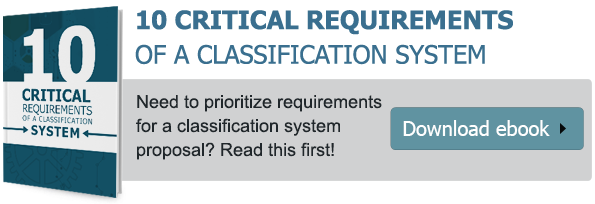Challenges Managing Duplicate Parts
1. Overview
Duplicates and near duplicates add costs throughout a products lifecycle, so it sensible to standardize on parts and avoid creating redundant or duplicate parts. Identifying duplicates and near duplicates is a cost effective exercise with excellent ROIs.
 Finding exact duplicates is not too difficult, however identifying near duplicates can be difficult. For example, two screws might have the same thread size, same length, and same coatings. Viewing the items in a stock room, it might not be able to tell the screws apart. However, the material strengths of the screws might be different and to haplessly swap the screws could have catastrophic results.
Finding exact duplicates is not too difficult, however identifying near duplicates can be difficult. For example, two screws might have the same thread size, same length, and same coatings. Viewing the items in a stock room, it might not be able to tell the screws apart. However, the material strengths of the screws might be different and to haplessly swap the screws could have catastrophic results.
There are varieties of specifications to consider identifying near duplicates. Every type of part will require special consideration.
The first step to identify duplicates is to organize parts using a classification scheme. To categorize the parts, organize technically similar parts into categories based on a hierarchical structure. The hierarchical structure can be a custom structure or an existing classification structure (ECCMA/ISO 8000, eClass, or UNSPSC). Using an existing classification structure is usually sufficient and can save lots of internal debate working out the subtitles of a custom structure.
Attributes are associated with each category. The attributes allow comparison between components in the category. To compare components, each parts’ attributes need to be complete and consistent. For example, a material attribute might have different values for the same material. Consider values for stainless steel, it might have values of “Stainless Steel”, “SS”, or “SS 316”.
Before identifying duplicates, the attributes values need to be normalized so each unique attribute value only has one allowed value.
After components have been categorized and the attributes values have been normalized, exact duplicates can be found by identifying components whose attributes all match. After exact duplicates are identified, a preferred component should be selected to promote a single standard and increase part reuse.
Searching for near duplicates is more complicated, since some components might not have exact matching attributes, but still might be able to be substituted for each other. Identifying near duplicates is an opportunity to consolidate part count and increase part reuse. For example, an electrical component such as a resistor, might be functionally identical but might have different form and fit preventing them from being substituted on designs. Or consider clamps which have identical form and fit, but are made of different materials. One material only being able to function at standard temperature while the other can withstand high temperatures. Substituting the low temperature material clamp for the high-temperature clamp could lead to a dangerous failure.
With near duplicates, distinguishing near duplicates is dependent on a company’s specific use of the components, so each near duplicates analysis requires a unique set of criteria to assess. To define the criteria, consider grouping component attributes according to the three ‘F’s - form, fit, and function. Using the 3Fs can help establish which attributes are important for a company’s use case.
- Form refers a part’s shape, size, mass, and physical distinguishing features.
- Fit refers to a part’s ability to interface with, connect to, or integrate with other parts.
- Function refers to a part’s intended action(s)
Depending upon the component type and use case, priority could be given to a different one of the three Fs. Electrical parts have many types of components which are functionally identical, but have different fit and form, so priority might be given to fit and form over function. Mechanical parts, however, might have some bolts with identical form and fit, but might have different materials with different strengths, so their function might different. So for mechanical parts, function might need to be prioritized.
Identifying duplicates and near duplicates requires effort to set up a system to categorize and compare components, but the benefits are worth it. Identifying duplicates improves engineering’s ability to select parts, increases part reuse and standardization, decreases inventory, and improves purchasing’s leverage with vendors.
There may be several reasons why a company may have duplicates including: more than one new part creation process, having a new part creation process that doesn’t enforce data standardization and categorization, very poor legacy data impossible to search, etc. If your company has any of these characteristics, there will always be a struggle to address duplicate part proliferation issues.



